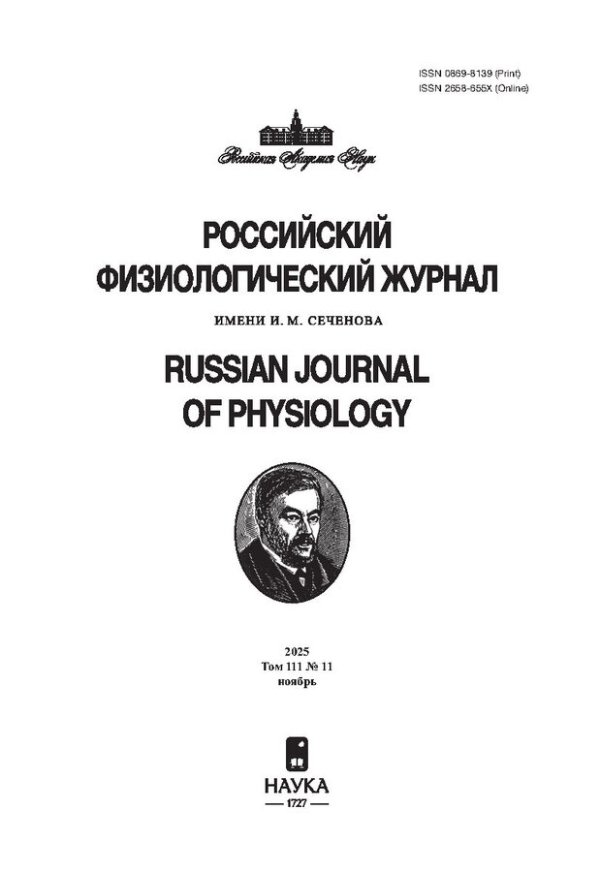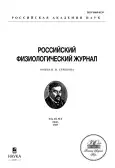Методы оценки подобия контуров серого вещества на поперечных срезах спинного мозга млекопитающих
- Авторы: Ляховецкий В.А.1, Шкорбатова П.Ю.1, Вещицкий А.А.1, Merkulyeva Н.С.1
-
Учреждения:
- Институт физиологии им. И.П. Павлова РАН
- Выпуск: Том 111, № 6 (2025)
- Страницы: 976-990
- Раздел: МЕТОДИЧЕСКИЕ СТАТЬИ
- URL: https://bakhtiniada.ru/0869-8139/article/view/304820
- DOI: https://doi.org/10.31857/S0869813925060101
- EDN: https://elibrary.ru/tekvya
- ID: 304820
Цитировать
Аннотация
Спинной мозг подразделяется на сегменты; нейронные сети различных групп сегментов контролируют, в частности, локомоцию и висцеральные функции. Сегменты спинного мозга являются важными топографическими ориентирами при осуществлении экспериментальных и лечебных воздействий. Однако определение точного положения сегментов in vivo (особенно автоматизированное) сопряжено со значительными трудностями: у млекопитающих часть сегментов спинного мозга смещена рострально (восходит) по отношению к одноименным позвонкам, причем степень восхождения несколько варьирует даже в рамках одного вида. Одним из решений проблемы может быть использование эталонных изображений срезов сегментов, взятых, например, из гистологических атласов спинного мозга. В данной работе исследованы различные методы анализа подобия контуров серого вещества на поперечных срезах спинного мозга млекопитающих, позволяющие установить принадлежность среза к определенному сегменту. Рассмотрены методы анализа срезов, полученных от одного животного (основаны на использовании коэффициента Жаккара, метрики расстояний между контурами, на корреляционном анализе R-φ кривых или же инвариантных моментах Ху), а также методы сравнения изображения сегментов спинного мозга с эталонными (корреляционный анализ R-φ кривых, инвариантные моменты Ху). Полученные результаты позволяют предположить, что метод определения сегментов путем сравнения томографических или гистологических изображений поперечных срезов спинного мозга на разных уровнях с некоторой базой данных, содержащей набор эталонных изображений срезов конкретных сегментов, основанный на инвариантных моментах Ху, является наиболее эффективным из рассмотренных.
Об авторах
В. А. Ляховецкий
Институт физиологии им. И.П. Павлова РАН
Email: mer-natalia@yandex.ru
Санкт-Петербург, Россия
П. Ю. Шкорбатова
Институт физиологии им. И.П. Павлова РАН
Email: mer-natalia@yandex.ru
Санкт-Петербург, Россия
А. А. Вещицкий
Институт физиологии им. И.П. Павлова РАН
Email: mer-natalia@yandex.ru
Санкт-Петербург, Россия
Н. С. Merkulyeva
Институт физиологии им. И.П. Павлова РАН
Автор, ответственный за переписку.
Email: mer-natalia@yandex.ru
Санкт-Петербург, Россия
Список литературы
- Nieuwenhuys R (1964) Comparative anatomy of the spinal cord. Prog Brain Res 11: 1–57. https://doi.org/10.1016/S0079-6123(08)64043-1
- Порсева ВВ, Шилкин ВВ (2016) Строение серого вещества спинного мозга: неопределенности и перспективы исследования. Тихоокеанск мед журн 64: 20–30. [Porseva VV, Shilkin VV (2016) Gray matter structure of the spinal cord: Uncertainties and research prospects. Tikhookeansk med zhurn 64: 20–30. (In Russ)].
- Shah PK, Sureddi S, Alam M, Zhong H, Roy RR, Edgerton VR, Gerasimenko Y (2016) Unique spatiotemporal neuromodulation of the lumbosacral circuitry shapes locomotor success after spinal cord injury. J Neurotrauma 33: 1709–1723. https://doi.org/10.1089/neu.2015.4256
- Wenger N, Moraud EM, Gandar J, Musienko P, Capogrosso M, Baud L, Le Goff CG, Barraud Q, Pavlova N, Dominici N, Minev IR, Asboth L, Hirsch A, Duis S, Kreider J, Mortera A, Haverbeck O, Kraus S, Schmitz F, DiGiovanna J, van den Brand R, Bloch J, Detemple P, Lacour SP, Bézard E, Micera S, Courtine G (2016) Spatiotemporal neuromodulation therapies engaging muscle synergies improve motor control after spinal cord injury. Nat Med 22: 138–145. https://doi.org/10.1038/nm.4025
- Merkulyeva N, Veshchitskii A, Gorsky O, Pavlova N, Zelenin PV, Gerasimenko Y, Deliagina TG, Musienko P (2018) Distribution of spinal neuronal networks controlling forward and backward locomotion. J Neurosci 38: 4695–4707. https://doi.org/10.1523/JNEUROSCI.2951-17.2018
- Mesbah S, Herrity A, Ugiliweneza B, Angeli C, Gerasimenko Y, Boakye M, Harkema S (2022) Neuroanatomical mapping of the lumbosacral spinal cord in individuals with chronic spinal cord injury. Brain Commun 5: cac330. https://doi.org/10.1093/braincomms/fcac330
- Fredeen HT, Newman JA (1962) Rib and vertebral numbers in swine: I. Variation observed in a large population. Can J Anim Sci 42: 232–239. https://doi.org/10.4141/cjas62-036
- Greenaway J, Partlow G, Gonsholt N, Fisher K (2001) Anatomy of the lumbosacral spinal cord in rabbits. J Am Anim Hosp Assoc 37: 27–34. https://doi.org/10.5326/15473317-37-1-27
- Li C, Zhang X, Cao Y, Wei J, You S, Jiang Y, Cai K, Wumaier W, Guo D, Qi J, Chen C, Ni W, Hu S (2017) Multi-vertebrae variation potentially contribute to carcass length and weight of Kazakh sheep. Small Rumin Res 150: 8–10. https://doi.org/10.1016/j.smallrumres.2017.02.021
- Williams SA, Russo GA (2015) Evolution of the hominoid vertebral column: The long and the short of it. Evol Anthropol Issues News Rev 24: 15–32. https://doi.org/10.1002/evan.21437
- Shkorbatova PolinaY, Lyakhovetskii VA, Merkulyeva NS, Veshchitskii AA, Bazhenova EY, Laurens J, Pavlova NV, Musienko PE (2019) Prediction algorithm of the cat spinal segments lengths and positions in relation to the vertebrae. Anat Rec 302: 1628–1637. https://doi.org/10.1002/ar.24054
- Cadotte DW, Cadotte A, Cohen-Adad J, Fleet D, Livne M, Wilson JR, Mikulis D, Nugaeva N, Fehlings MG (2015) Characterizing the location of spinal and vertebral levels in the human cervical spinal cord. Am J Neuroradiol 36: 803–810. https://doi.org/10.3174/ajnr.A4192
- De Leener B, Lévy S, Dupont SM, Fonov VS, Stikov N, Louis Collins D, Callot V, Cohen-Adad J (2017) SCT: Spinal Cord Toolbox, an open-source software for processing spinal cord MRI data. NeuroImage 145: 24–43. https://doi.org/10.1016/j.neuroimage.2016.10.009
- Cuellar CA, Mendez AA, Islam R, Calvert JS, Grahn PJ, Knudsen B, Pham T, Lee KH, Lavrov IA (2017) The role of functional neuroanatomy of the lumbar spinal cord in effect of epidural stimulation. Front Neuroanat 11: 82. https://doi.org/10.3389/fnana.2017.00082
- Eldridge L (1984) Vertebral location of cord segments innervating cat hind limb musculature. Exp Neurol 83: 193–198. https://doi.org/10.1016/0014-4886(84)90057-8
- Rexed B (1954) A cytoarchitectonic atlas of the spinal cord in the cat. J Comp Neurol 100: 297–379. https://doi.org/10.1002/cne.901000205
- Sengul G, Watson C, Tanaka I, Paxinos G (2013) Atlas of the spinal cord of the rat, mouse, marmoset, rhesus, and human. Elsevier AP. Amsterdam.
- Shek JW, Wen GY, Wisniewski HM (1986) Atlas of the rabbit brain and spinal cord. Karger. Basel München Paris.
- Veshchitskii A, Shkorbatova P, Merkulyeva N (2022) Neurochemical atlas of the cat spinal cord. Front Neuroanat 16: 1034395. https://doi.org/10.3389/fnana.2022.1034395
- Asman AJ, Bryan FW, Smith SA, Reich DS, Landman BA (2014) Groupwise multi-atlas segmentation of the spinal cord’s internal structure. Med Image Anal 18: 460–471. https://doi.org/10.1016/j.media.2014.01.003
- Despotović I, Goossens B, Philips W (2015) MRI segmentation of the human brain: Сhallenges, methods, and applications. Comput Math Methods Med 2015: 450341. https://doi.org/10.1155/2015/450341
- Fasse A, Newton T, Liang L, Agbor U, Rowland C, Kuster N, Gaunt R, Pirondini E, Neufeld E (2024) A novel CNN-based image segmentation pipeline for individualized feline spinal cord stimulation modeling. J Neural Eng 21. https://doi.org/10.1088/1741-2552/ad4e6b
- Shao H-C, Peng C-Y, Wu J-R, Lin C-W, Fang S-Y, Tsai P-Y, Liu Y-H (2021) From IC layout to die photograph: A CNN-based data-driven approach. IEEE Trans Comput-Aided Des Integr Circuits Syst 40: 957–970. https://doi.org/10.1109/TCAD.2020.3015469
- Liang C, Gao D, Hubert M, Yin X, Gao C (2011) A boundary-line method for pattern recognition on real particles. Powder Technol 213: 155–161. https://doi.org/10.1016/j.powtec.2011.07.028
- Merkus HG (2009) Particle Size, Size Distributions and Shape. In: Particle Size Measurements. Springer Netherlands. Dordrecht. 13–42.
- Iqbal K, Odetayo MO, James A (2012) Content-based image retrieval approach for biometric security using colour, texture and shape features controlled by fuzzy heuristics. J Comput Syst Sci 78: 1258–1277. https://doi.org/10.1016/j.jcss.2011.10.013
- Watson C, Paxinos G, Kayalioglu G (2009) The spinal cord 1st ed. Elsevier/Acad Press. Amsterdam Boston.
- Hu M-K (1962) Visual pattern recognition by moment invariants. IEEE Trans Inf Theory 8: 179–187. https://doi.org/10.1109/TIT.1962.1057692
- Sáenz-Gamboa JJ, Domenech J, Alonso-Manjarrés A, Gómez JA, De La Iglesia-Vayá M (2023) Automatic semantic segmentation of the lumbar spine: Clinical applicability in a multi-parametric and multi-center study on magnetic resonance images. Artif Intell Med 140: 102559. https://doi.org/10.1016/j.artmed.2023.102559
- Tsagkas C, Horvath-Huck A, Haas T, Amann M, Todea A, Altermatt A, Müller J, Cagol A, Leimbacher M, Barakovic M, Weigel M, Pezold S, Sprenger T, Kappos L, Bieri O, Granziera C, Cattin P, Parmar K (2023) Fully automatic method for reliable spinal cord compartment segmentation in multiple sclerosis. Am J Neuroradiol 44: 218–227. https://doi.org/10.3174/ajnr.A7756
- Vanderhorst VGJM, Holstege G (1997) Organization of lumbosacral motoneuronal cell groups innervating hindlimb, pelvic floor, and axial muscles in the cat. J Comp Neurol 382: 46–76. https://doi.org/10.1002/(SICI)1096-9861(19970526)382:1<46::AID-CNE4>3.0.CO;2-K
- Порсева ВВ, Шилкин ВВ (2016) Сегмент спинного мозга: реальность или миф. В сб: Достижения и инновации в современной морфологии: сб трудов науч-практ конф посвящ 115-летию со дня рожд акад ДМ Голуба. Минск. Беларусь 101–104. [Porseva VV, Shilkin VV (2016) Spinal cord segment: Reality or myth. In: Achievements and innovations in modern morphology: Collection of works of scientific and practical conference dedicated to the 115th anniversary of the birth of academ D Golub. Minsk. Belarus 101–104. (In Russ)].
- Gross C, Ellison B, Buchman AS, Terasawa E, VanderHorst VG (2017) A novel approach for assigning levels to monkey and human lumbosacral spinal cord based on ventral horn morphology. PLoS One 12: e0177243. https://doi.org/10.1371/journal.pone.0177243
- Harrison M, O’Brien A, Adams L, Cowin G, Ruitenberg MJ, Sengul G, Watson C (2013) Vertebral landmarks for the identification of spinal cord segments in the mouse. NeuroImage 68: 22–29. https://doi.org/10.1016/j.neuroimage.2012.11.048
- Powers JM, Ioachim G, Stroman PW (2018) Ten key insights into the use of spinal cord fMRI. Brain Sci 8: 173. https://doi.org/10.3390/brainsci8090173
- Malinska J, Hubackova E, Malinsky J (1976) A topographical and quantitative anatomical study of the spinal cord in the mole. Acta Univ Palacky Olomus Fac Med 76: 169–178.
- Ko H-Y, Park JH, Shin YB, Baek SY (2004) Gross quantitative measurements of spinal cord segments in human. Spinal Cord 42: 35–40. https://doi.org/10.1038/sj.sc.3101538
- Thomas CE, Combs CM (1965) Spinal cord segments. B Gross structure in the adult monkey. Am J Anat 116: 205–216. https://doi.org/10.1002/aja.1001160110
- Mendez A, Islam R, Latypov T, Basa P, Joseph OJ, Knudsen B, Siddiqui AM, Summer P, Staehnke LJ, Grahn PJ, Lachman N, Windebank AJ, Lavrov IA (2021) Segment-specific orientation of the dorsal and ventral roots for precise therapeutic targeting of human spinal cord. Mayo Clin Proc 96: 1426–1437. https://doi.org/10.1002/aja.1001160110
- Mustapha OA, Aderounmu OA, Olude MA, Okandeji ME, Akinloye AK, Oke BO, Olopade JO (2015) Anatomical studies on the spinal cord of the greater cane rat (Thryonomys swinderianus, Temminck) I: Gross morphometry. Niger Vet J 36: 1192–1202.
- Klein S, Staring M, Murphy K, Viergever MA, Pluim J (2010) elastix: A toolbox for intensity-based medical image registration. IEEE Trans Med Imaging 29: 196–205. https://doi.org/10.1109/TMI.2009.2035616
- Fiederling F, Hammond LA, Ng D, Mason C, Dodd J (2021) Tools for efficient analysis of neurons in a 3D reference atlas of whole mouse spinal cord. Cell Rep Methods 1: 100074. https://doi.org/10.1016/j.crmeth.2021.100074
Дополнительные файлы










